Nothing mars the beauty of an aquarium quite like a brown algae outbreak. Their dark brown color contrasts sharply with the vibrant colors of most fish and plants, and the slimy film they form on the surfaces can be unsightly. Thankfully, like most algae, brown algae (or diatoms) can usually be controlled with a few simple steps.
This article takes an in-depth look at what diatoms are, their causes, and the best solutions for controlling brown algae in fish tanks. By the end of this article, you will have a better understanding of how to prevent and treat diatom outbreaks in your aquarium.
What Are Diatoms?
It’s time to get technical. What exactly are diatoms? Well, diatoms are a type of single-celled algae. Everything it needs to photosynthesize, like chloroplasts, is contained within its single cell! And speaking of its cell, it’s protected by a silica shell, or cell wall – this is the part that gives diatoms their brown color. You might be familiar with silica, or silicon dioxide – it’s the same stuff that makes up beach sand.
Diatoms aren’t necessarily harmful in and of themselves, but they look unattractive and can be an indication of water quality problems. Left unchecked, brown algae bloom can wreak havoc on your tank’s ecosystem. For instance, diatoms can block out light by forming a layer of slime on the glass. And by forming a thick layer on the plant leaves, they prevent photosynthesis from taking place.
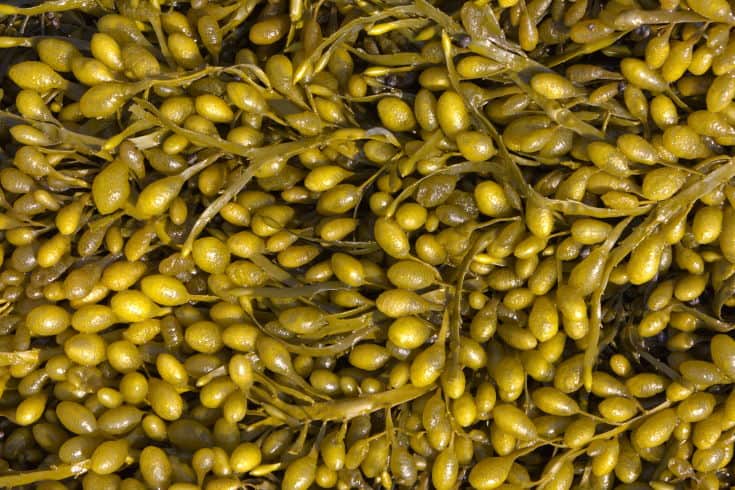
Whether you’re concerned about the appearance or health of your tank, it’s important to understand the causes of diatoms and the best ways to get rid of them.
Causes of Brown Algae
Identifying the cause of a brown algae bloom is essential in order to get rid of it. There are a few primary causes of diatoms:
Presence of Excess Silicates
Remember when we talked about the silica walls encasing these single-celled organisms? Well, it turns out that silicates are a major factor in the development of diatoms. If the silicate levels in your tank are too high, then it can cause an outbreak of brown algae. Think about it this way – the more silicates present in the water, the more resources are available for diatoms to form their protective cell walls.
The usual suspects when it comes to excess silicates are tap water and aquarium substrate. Many aquarium owners unwittingly use substrates such as silica sand that can introduce silicates into the tank. Tap water is another common source of silicates, so it’s important to test your tap water for silicates before using it in your tank.
If you’ve also noticed a diatom bloom in your saltwater tank, consider the possibility that your salt mix contains silicates. This is especially likely if you’re using a cheaper salt mix.
Nitrate Buildup
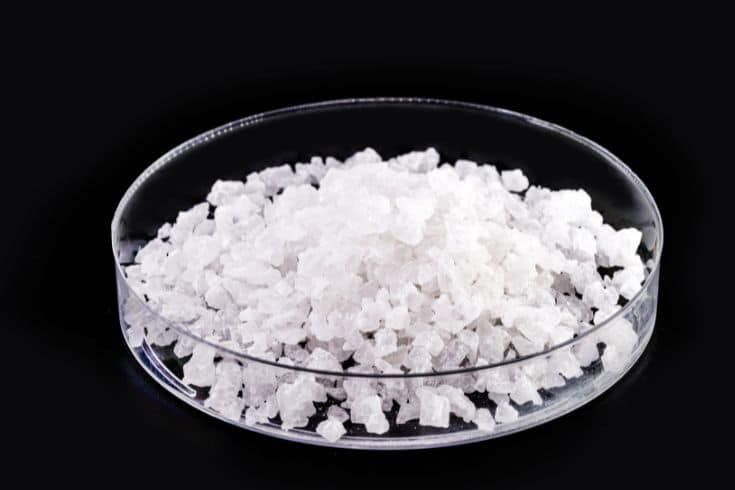
Another major cause of brown algae blooms is nitrate buildup. You’d typically expect nitrate levels in an aquarium to remain low, but they are produced as a byproduct of fish waste and uneaten food. If nitrate levels start to climb, then it can create the perfect environment for diatoms to thrive. And once you have enough diatoms in your tank, they’ll quickly make their presence felt.
Why? Well, diatoms are incredibly efficient at using nitrates as a nutrient source. In fact, they can grow so quickly in high-nitrate environments that they can quickly outcompete other aquatic plants for resources. And yes, this absolutely makes diatoms a threat to any tank that has live plants. The last thing you want is for them to be outcompeted and eventually die off.
Tank Immaturity (As Part of the Cycling Process)
One of the most common causes of diatom outbreaks is simply the immaturity of the aquarium itself. It’s important to remember that when you first set up a new tank, you’re essentially in the middle of a cycling process. This process involves the natural buildup of beneficial bacteria in your tank, which helps to keep your water parameters balanced and your fish healthy.
Unfortunately, this process can take several weeks to complete. During this time, it’s not uncommon to see brown patches and slimy films forming on the glass and substrate. This is usually caused by diatoms taking advantage of the immature aquarium environment. The good news is that once the tank has fully cycled, the diatom bloom should go away on its own.
What should you do while waiting for the tank to cycle (and for the brown algae to go away?) The best thing you can do is simply keep up with your water changes and monitor your water parameters. This will help to keep your tank in the best condition possible while it’s going through the cycling process.
High Lighting Levels
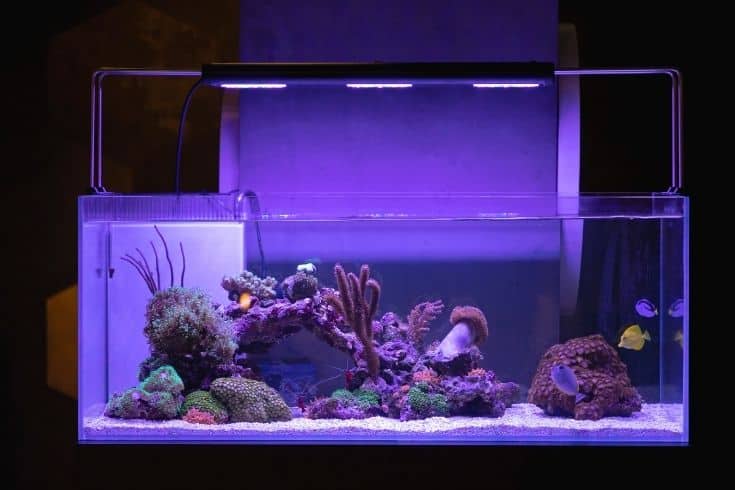
The last major cause of diatoms is high lighting levels. Providing too much light is a surprisingly common problem for aquarium owners – especially those with planted tanks. It can be tempting to try and squeeze every last bit of light into your tank in order to promote healthy plant growth.
But too much light can be just as harmful as too little. High lighting levels can lead to an increase in the population of diatoms in the tank. The excess light stimulates photosynthesis in the diatoms, leading to a population explosion. The result? Brown algae bloom on the glass, substrate, and plants.
Some fishkeepers also make the mistake of leaving their lights on for too long. This, too, can be a cause of diatom blooms. The excess light can be too much for the diatoms to handle, resulting in an explosion in their population. The best way to avoid this is to stick to a regular light cycle (no more than 10-12 hours a day).
Phosphate Imbalance
Finally, it’s important to remember that diatoms can also be caused by an imbalance in phosphate levels. Though phosphates are an essential nutrient in plant growth, you can have too much of a good thing. Having excess minerals floating around in your tank invites diatoms to form. And why wouldn’t they? Diatoms have evolved to take advantage of these resources.
If you suspect that your phosphate levels are out of whack, run a quick water test to confirm your suspicions. If the results show that your phosphates are too high, then you’ll need to take steps to reduce them. We don’t recommend performing a drastic water change, but feel free to replace up to 30% of your tank water with fresh, treated water. Again – please go slowly and test the water parameters regularly.
These are just some of the many causes of diatom outbreaks. There are other factors that can contribute to diatoms, such as overfeeding, low water flow, and low pH levels. Be sure to explore all of the possible causes before attempting to treat your tank for diatoms. Figuring out the root cause of the problem is key to preventing diatoms in the future.
How To Remove Brown Algae
Assuming that you’ve identified the cause of your diatom outbreak, it’s time to start thinking about solutions. Here are some of the best ways to get rid of brown algae in your tank:
Remove Algae on Plants and Décor
Given the tiny nature of diatoms, it can be difficult to remove them from the nooks and crannies of your tank décor. This is especially true if you have a lot of live plants or coral in your tank. The best way to remove diatoms is to manually scrub them away with a soft brush or cloth. Personally, I find that a used toothbrush works best for this job.
If you don’t want to scrub your tank decorations by hand, or if your diatom outbreak is particularly bad, then you can also try using bleach as an algaecide. Let me preface this by saying that bleach is a harsh chemical and, if not used properly, can damage your tank and its inhabitants. However, it should be reasonably safe to use between 6-10 oz of bleach per gallon of tank water.
When in doubt, please consult with a professional before using any chemical treatments on your aquarium.
Vacuum the Substrate
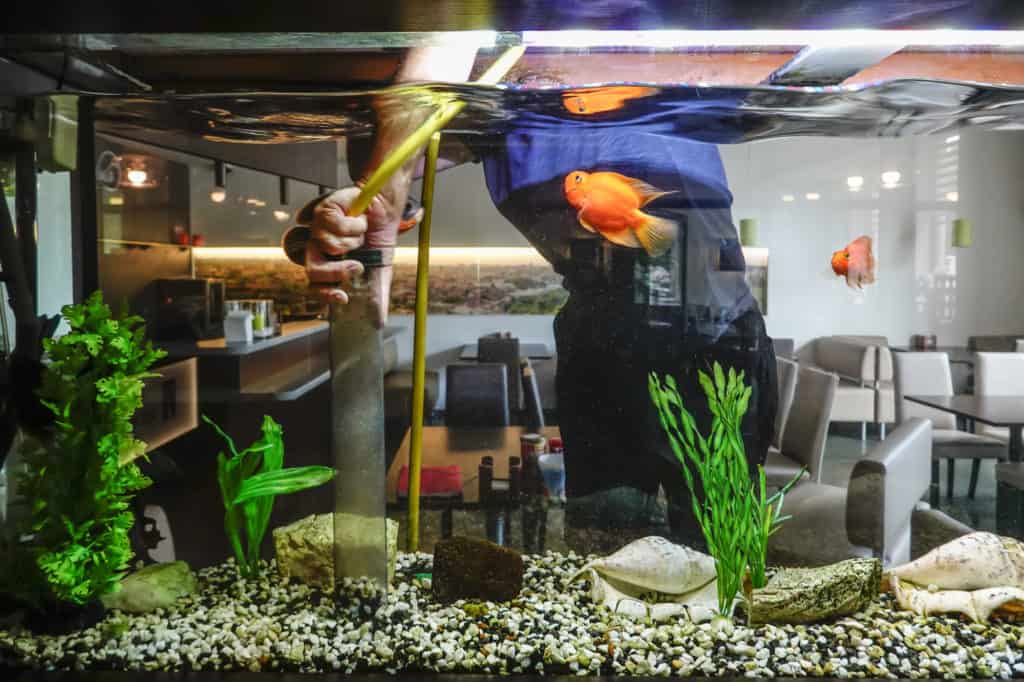
Everyone knows that the fishkeeping hobby is a tedious, time-consuming affair. But that doesn’t mean that you can slack off on the basics. Regular, thorough substrate vacuuming should be part and parcel of regular maintenance. Not only will it remove uneaten food and fish waste, but it’ll also help suck up any diatoms that have started to form.
A gravel vacuum is your best friend in the battle against diatoms. Make sure to vacuum the gravel in multiple passes, going over the same area several times. Because diatoms are so tiny, they can insert themselves into the tiny gaps and crevices in the substrate. Going over the substrate multiple times ensures that you get rid of as much of the brown gunk as possible.
Of course, you’d still need to address any underlying issues and root causes of the diatom outbreak, but vacuuming the substrate is an essential step in removing diatoms.
Clean The Tank Walls
Nobody likes seeing a thick brown film on their tank walls, least of all diatom-hating aquarists. Thankfully, getting rid of diatoms off the glass walls of your tank is a relatively easy task. All you need is some elbow grease, a good sponge, and some tank-safe cleaning solution.
We recommend using a sponge made of natural materials, such as cellulose or cotton. In terms of cleaning solutions, we suggest diluting a teaspoon of bleach in one gallon of water. Make sure to rinse the sponge out thoroughly before using it in your tank, and avoid scrubbing the glass too hard.

Remember, you don’t want to damage the sealant or silicone. If you’re having trouble removing the diatoms from the glass, try using a razor blade. Just make sure to be gentle, as you don’t want to scratch the glass.
Perform Regular Water Changes
Whether you’re dealing with a nitrite or phosphate-related problem, something has to be done about the state of your water column. Simply put, you need to remove as much of that diatom-feeding stuff from your tank as possible. That’s why regular water changes – more specifically, partial water changes – are so important.
When performing a water change, the goal is to remove any uneaten fish food or fish waste, as well as any ammonia, nitrite, or phosphate that may be present in the tank. To do this, you’ll want to siphon at least 25% of your tank’s water out and replace it with fresh, dechlorinated water. You’ll also want to test your water before and after the water change just to make sure that everything’s in order.
Sometimes, the root cause of the issue lies with the water source itself. For instance, your water source may contain silicates. In these cases, a water change alone is unlikely to solve the issue. Instead, you’ll need to purify your water with a reverse osmosis filter or a deionizing filter. Then, you should remineralize your water with a mineral supplement before adding it to your tank.
Keep Brown Algae Eaters
Last but not least, we have the tried and true method of keeping fish, snails, and shrimp that eat algae. Whether you opt for a friendly bottom feeder or a tiny little shrimp, there’s one thing these creatures all have in common: They’d happily treat the brown algae in your tank as a scrumptious food source, leaving a pristine aquascape behind in their wake. Doesn’t that sound like a win-win?
If you have indeed decided to add some algae-eaters to your tank, make sure you choose the right ones for the job. Here are some of our top recommendations:
Nerite Snails
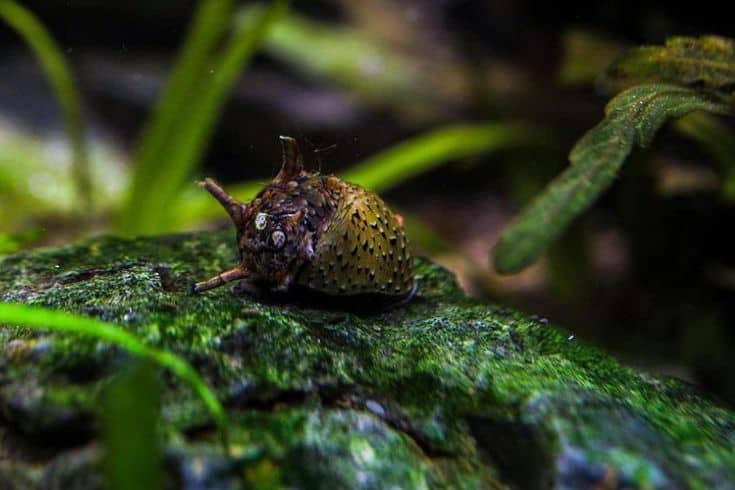
Nerite snails are small, aquatic snails that don’t get bigger than a few inches in size. They are resilient, thrive under a wide range of water conditions, and will make light work of brown algae.
Amano Shrimp
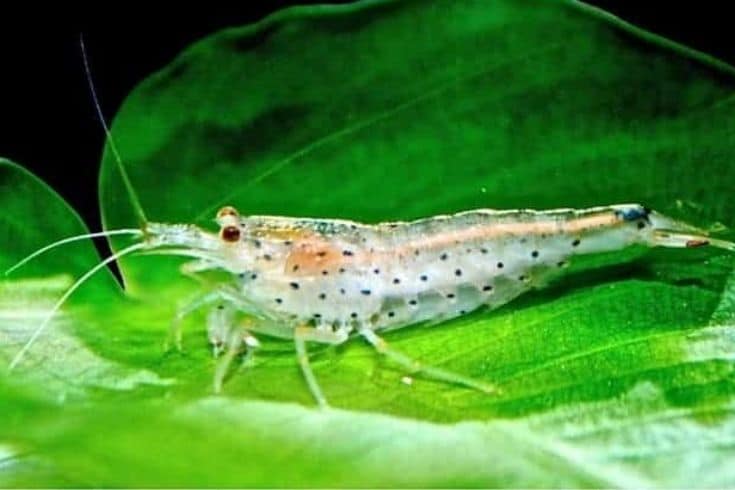
Don’t underestimate the power of a tiny Amano shrimp. Despite their diminutive stature, these little critters will spend all day munching away at brown algae, leaving a spotless tank behind. To make things even better, they make peaceful, easy-going tankmates that will get along with just about any fish.
Otocinclus Catfish
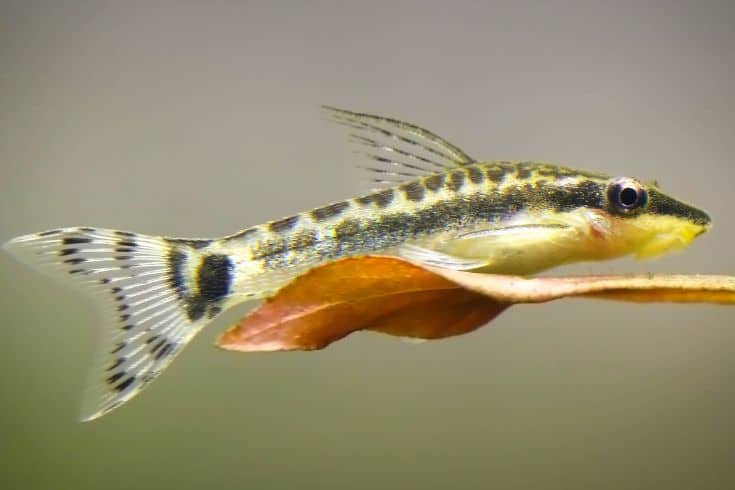
Don’t let the unassuming Otocinclus Catfish fool you; these bottom-dwellers are some of the most efficient algae eaters out there. When fully mature, these fish only reach 1.5 to 2 inches in length, so please vet all prospective tankmates carefully! You don’t want your helpful cleanup crew to become lunch.
Bristlenose Plecos
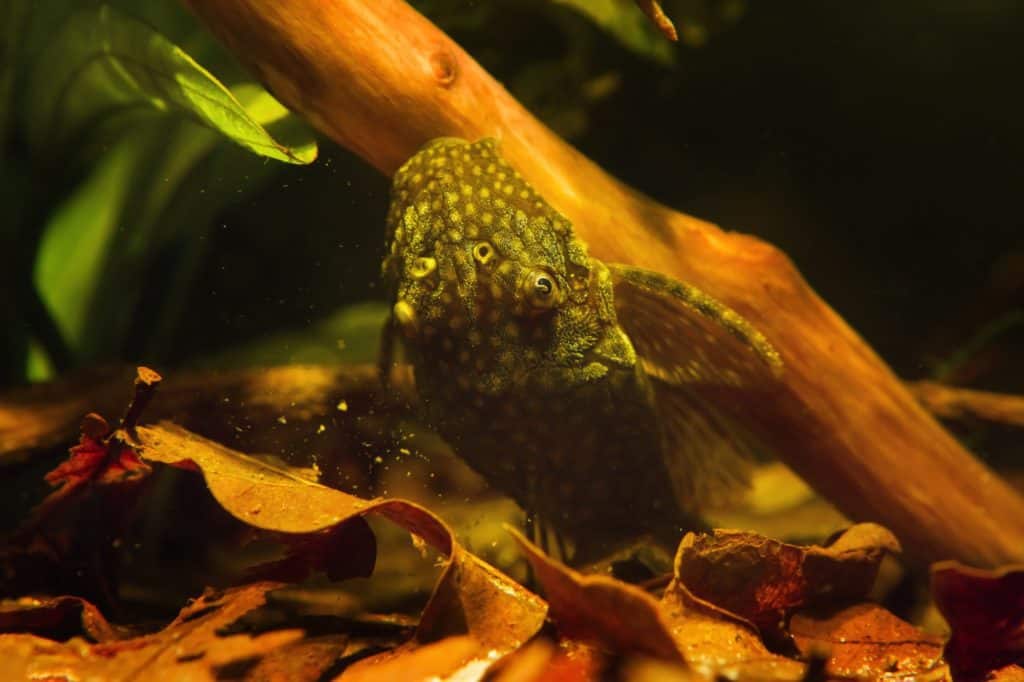
Last but not least, we have the Bristlenose Plecos. These fish are larger than most of their algae-eating peers, reaching up to 5 inches in length when fully grown. This makes them perfect for a tank that contains larger fish.
Keep in mind that with every single algae-eater on this list (and beyond), you’ll likely need to supplement their diets. Pure herbivores may not get enough algae to survive, so it’s important to offer a variety of vegetable-based foods like blanched lettuce or spinach. And omnivores will undoubtedly need some animal-based protein sources in their diets to stay healthy.
The Takeaway
A brown algae bloom can seem like every fish keeper’s worst nightmare at first glance, but understanding their root causes can help you to prevent and manage them. Remember to keep your tank clean, and keep an eye on your silica, phosphate, and nitrate levels. And if your tank is fairly immature, rest assured knowing that brown algae blooms can be a normal part of the cycling process.
Did you enjoy this article? If you did, please share it with someone who might find it helpful! Diatom blooms are more common than you would think, and we’re confident that our readers can benefit from understanding the causes and solutions for them. Thanks for reading, and until next time!

I had a bad outbreak of brown algae about 2 months after I set up my 55 gallon community tank. I had about 10 fish at the time & the diatom hit! Within 3 days it was everywhere. Not wanting to put any type of chemical or other products to get rid of it I did some research & I decided to go with a school of Ottos. I purchased 6 from my LFS & within a week it was just about gone. Those little guys did a great job.
First of all, Ms. Page, you’re absolutely beautiful! And I love reading your articles. Very informative and educational!!
Have Diatoms in 2 large tanks. Both are not new filters and have been set up for many months.
I’m using Phosguard and Sili out in both tanks.
Both tanks are over filtered with good levels of flow. I even get Diatoms in my filter inlets and outlets and on air stones.
My water is hard.
I’ve tried everything – low light, high light.
Currently doing 40 – 60 % water changes every 48 hours to keep on top.
Heavily planted tanks mean its impossible to wipe off every plant.
I have a third tank which doesn’t have Diatoms – so it can’t be my water source.
I use Seachem prime and my water test results show very low levels of Nitrate and zero ammonia.
Ideas please ?
I’ve been having outbreaks of brown algae for the past month. I take everything out of the tank, clean it with a small brush, vacuum the substrate, wipe down all the walls, change the filter, and do about a 40% water change. I add water conditioner every time I change the water. Stupid diatoms keep coming back. My next step will be a brown algae-eating species of some kind. The only fish I have in the tank (30g) is an oranda. My pride and joy, lol. He’s a bit of a savage, tho. I’ll have to carefully research which species he would get along with. Thanks for the advice!